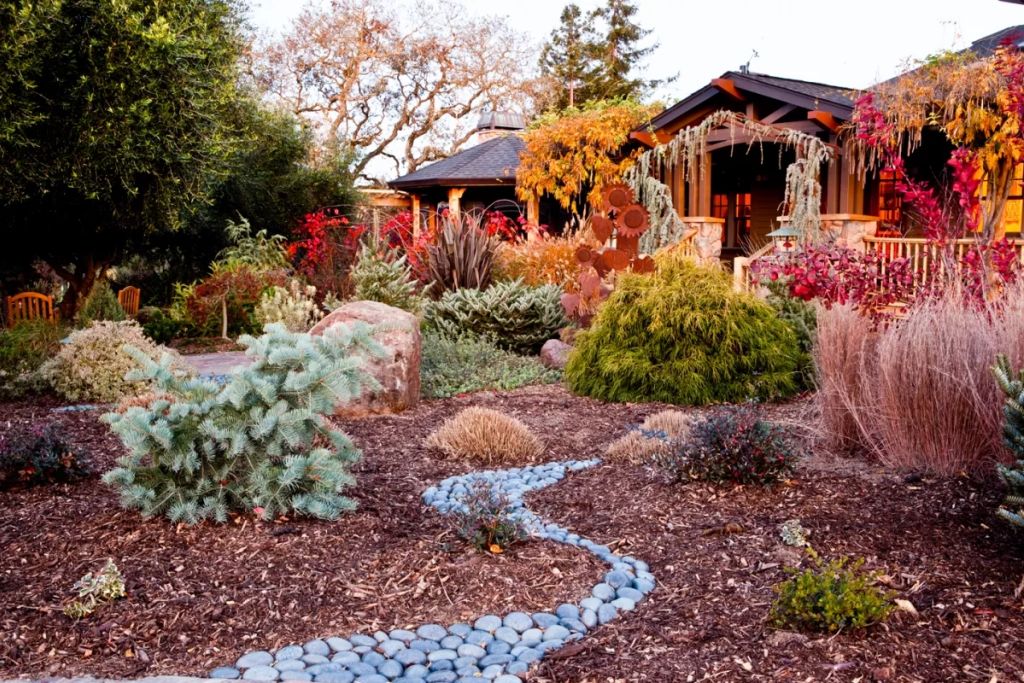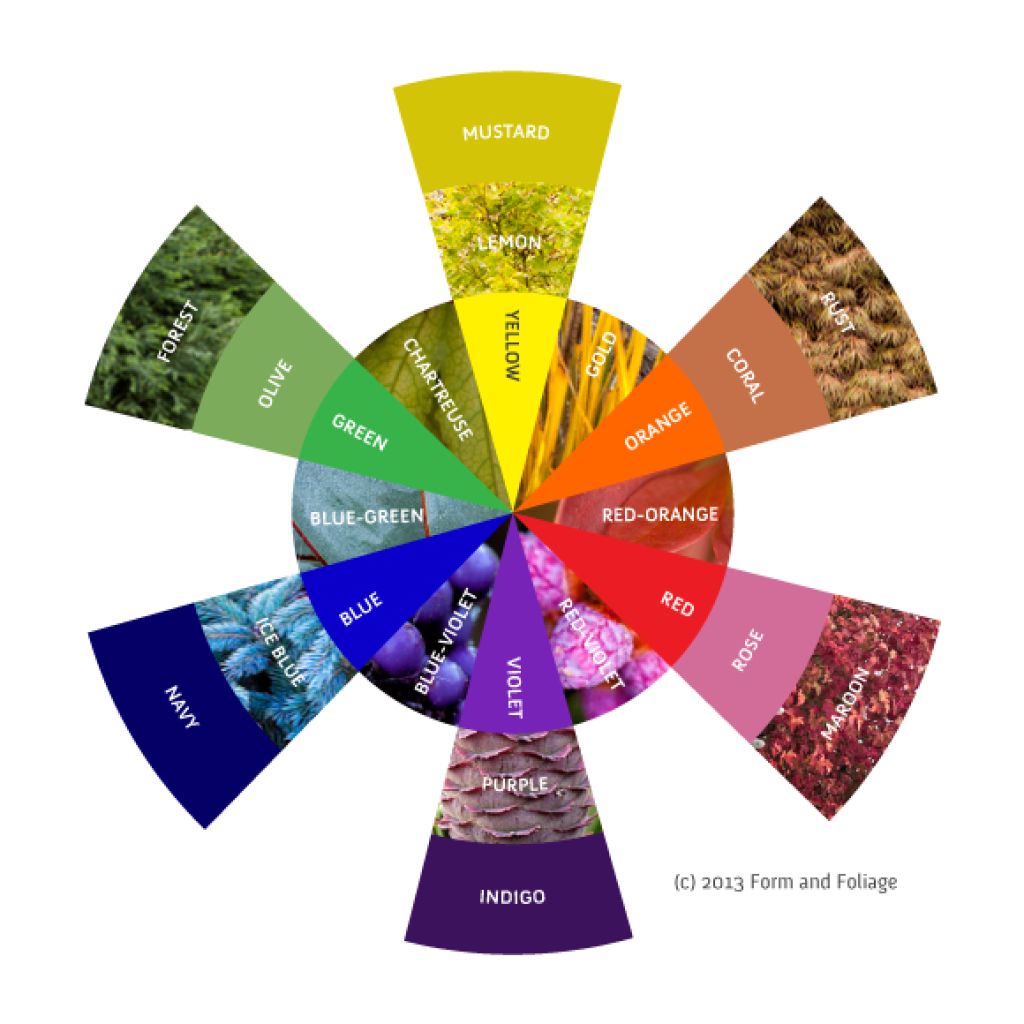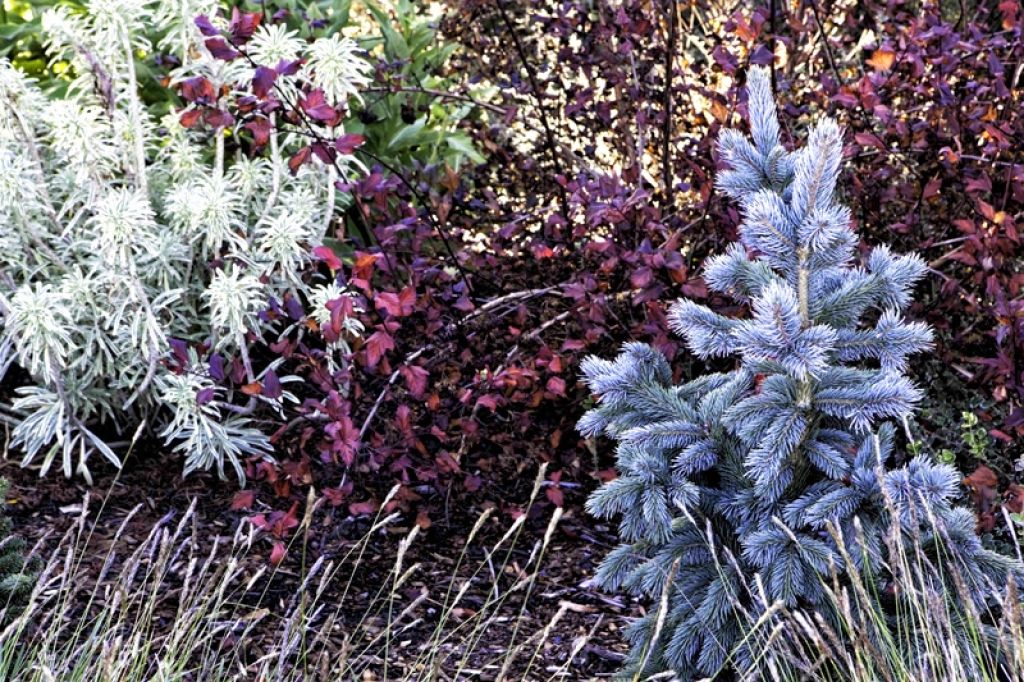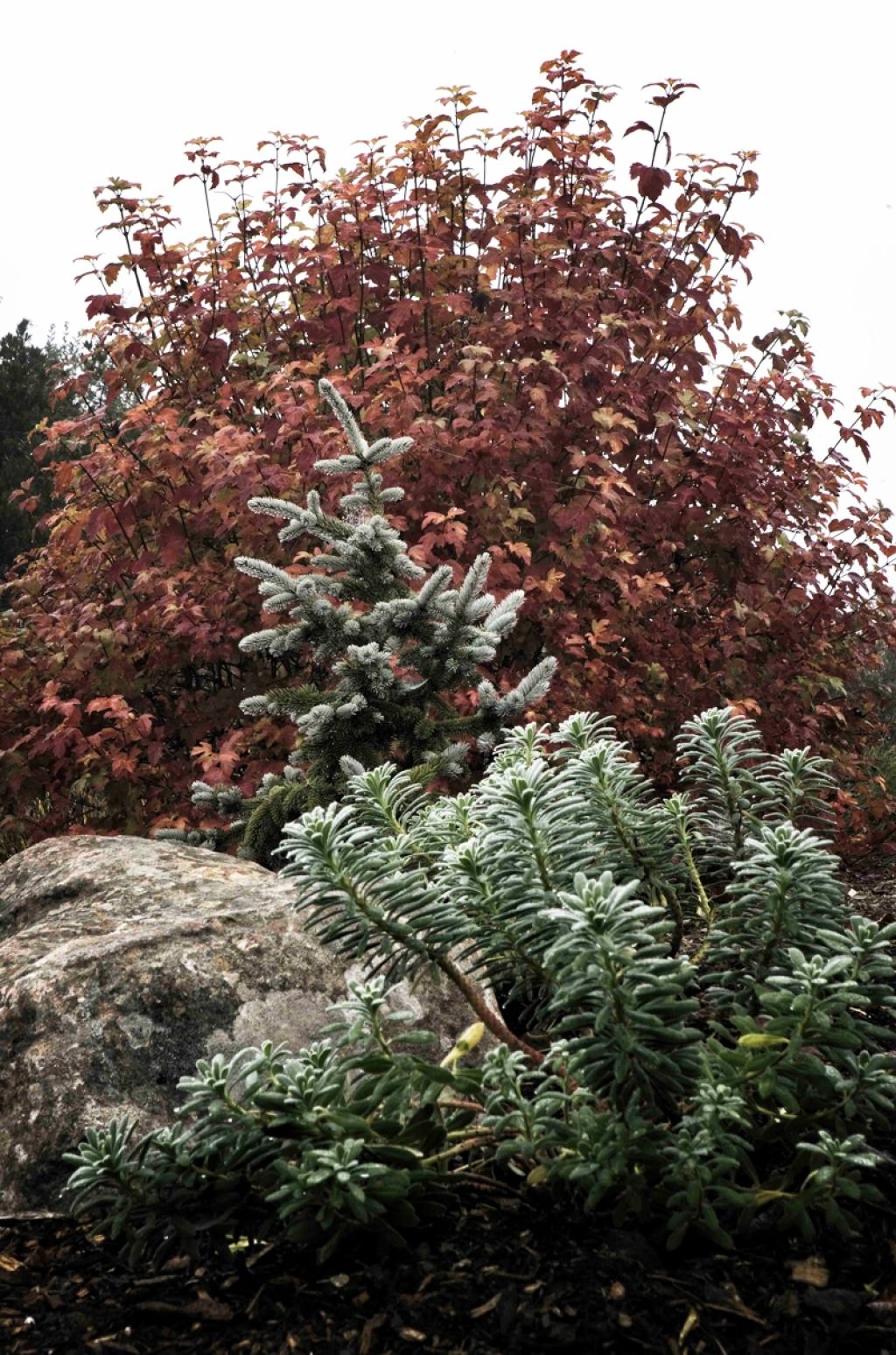
When most of us envision autumn colors, they are invariably the hot hues uncovered by waning chlorophyll production: the reds, oranges and yellows of the anthocyanins, carotenoids and xanthophylls. These, indeed, are the archetypal autumnal hues from both art and life that precede the descent into drab winter that befalls many climates. However, if you want to get the biggest burst of fall color in your garden, the deepest, fieriest show that the turning leaves can stage, plant something blue to showcase the heat.

Blue and orange are color wheel opposites, and opposing hues complement each other in dramatic but satisfying ways. Red and green; purple and yellow; blue and orange, as we move around the wheel, are classic combinations that gardeners put to good effect when designing perennial borders. Generally composed of one ‘hot’ and one ‘cold’ color, these combinations are pleasing but also provide ‘oomph’.

Oddly, when designing foliage gardens, this simple trick of the color wheel is overlooked. Gardeners seeking an autumn show plant deciduous selections that admittedly turn brilliant colors when the days shorten: Viburnums, Fothergillas, maples, smoke bushes, etc., all of which have stunning fall color. However, their color is significantly enriched when their garden companions are blue-hued evergreens. (There are great blue-hued deciduous foliage plants, too, but they turn color in fall along with the rest of the deciduous gang, so they don’t provide contrast in autumn.)
What are some choice candidates for best blue-leaved evergreen in a supporting role? There are conifers, broad-leaved evergreens, grasses and succulents available; what you choose will depend on your zone, your space and your taste.

We’ll start with the all-around winner: blue spruces. They can be grown in most of the U.S., are available in dwarf varieties, come in weeping and upright forms to suit different garden requirements and moods and many have needles the color of the blue in a box of crayons. This is not ‘blue’ as envisioned by a hybridizer who sees the world through wishful rose (er, blue) colored glasses. These needles are BLUE! Try one out against a fiery viburnum and see what we mean. Which to plant? The classic Colorado blue spruce (Picea pungens) gets quite large and has the dubious distinction of outgrowing more locations than perhaps any other suburban landscape plant in American history. So, go with a dwarf variety such as ‘Lucretia’ or ‘Fat Albert’, or try another species, such as P. engelmanii, P. glauca or P. abies, all of which have dwarf varieties that work better in most gardens than the straight species.

Staying in the conifer world, there is almost nothing as blue from a distance as an Arizona cypress (Cupressus glabra), var ‘Blue Ice’. This one only works if you have the space for it, as it will grow to about 30’, but if you do, try it next to a smoke bush like Cotinus ‘Grace’. She never looked so stunning as she does in full fall color, with ‘Blue Ice’ backing her up.
There are many other blue-needled conifers to suit almost any size, shape, texture and climatic zone – a few choice varieties are Chamaecyparis pisifera ‘Curly Tops’, Cedrus atlantica ‘Glauca pendula’ and many of the Abies concolor varieties.

If conifers are not your cup of compost tea and you live in zones 8-10, try Hebe pimeleoides ‘Quicksilver’. This low-growing, well-behaved hebe is silvery blue and makes a great skirt around a deciduous tree as in the photo above. Podocarpus ‘Monmal’, (also sold as ‘Icee Blue’), is another choice blue shrub (it's a conifer, but doesn't look like one!) Its broad evergreen leaves mimic flattened needles and it is reliably dusty blue year-round, doing its most important job in autumn when it moves from supernumerary to supporting role.
Also for warmer zones are the evergreen ornamental grasses Helictotrichon and Festuca; both have true-blue color and work well with deciduous shrubs such as Fothergilla and Spirea. Both grasses provide wonderful structural and textural contrast with the autumnal palette.
The list goes on, from Agaves like 'Blue Haze' to Eucalyptus (charming dwarf varieties such as ‘Moon Lagoon’, not the awful, messy behemoths), and the blue that you choose depends on your own garden’s particulars and your own taste. There are blue groundcovers (junipers, mostly, and don’t turn up your nose – there are some lovely varieties, you just need to overcome your prejudices and seek them out), grasses, shrubs and trees, so you really have no excuse.
So if you’re looking to add some intensity to next year’s autumn garden, get the blues. You’ll have the added benefit that since they are evergreen, they’ll continue to add interest to your garden long after the deciduous leaves have dropped.
Note to our subscribers: we are working on setting up plant lists and a photo gallery that are not part of the main blog post. We hope to have them up and running within the next couple of months, and we'll try to make them retroactive. Thanks!
Copyright 2011 by Form and Foliage